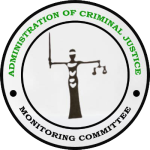Empowering Our Future: Understanding the Child Rights Act Nigeria and its Impact on Juvenile Justice
With the recent release of minors who were caught in the justice system, we are reminded of the importance of a legal framework that protects children and their rights. AWJAI is committed to fostering a society where every child can thrive, free from exploitation, neglect, and undue suffering. The Act serves as both a blueprint for policymakers and a guide for parents, educators, and advocates to understand and uphold the rights of every child.
What is the Child Rights Act?
The Child Rights Act (CRA), adopted by Nigeria in 2003, is the cornerstone of child welfare legislation in the country. It is designed to integrate international principles from the United Nations Convention on the Rights of the Child (UNCRC) into Nigerian law, safeguarding children’s rights to education, healthcare, family life, and protection from abuse. The CRA acknowledges that children are a vulnerable group requiring specific rights and protections to ensure their safe and healthy development.
While Nigeria ratified the UNCRC, it was essential to translate those rights into local law. The CRA enshrines these rights and delineates responsibilities at various levels of society, from parents and caregivers to government authorities. Importantly, it establishes guidelines for dealing with children within the legal system, focusing on rehabilitation rather than punishment.
Key Provisions of the Child Rights Act
The CRA encompasses several critical provisions that address various aspects of a child’s life. Some of the key areas include:
1. Right to Survival and Development: The Act mandates that every Nigerian child has the right to life, survival, and holistic development. This includes ensuring that children are nurtured in a safe and conducive environment, allowing them to grow physically, mentally, and emotionally.
2. Right to Education: Every child is entitled to free, compulsory basic education. Education is seen not only as a right but as a critical element of a child’s growth and preparation for adulthood. The CRA also seeks to protect children from any form of work or exploitation that may interfere with their schooling.
3. Protection from Exploitation and Abuse: The CRA explicitly prohibits child labor, trafficking, and other forms of exploitation, as well as physical or psychological abuse. It ensures that children’s environments, whether at home, school, or in institutions, are safe from harm.
4. Juvenile Justice and Rehabilitation: For children who find themselves in conflict with the law, the CRA prioritizes rehabilitation over punishment. Minors are not to be incarcerated with adult offenders, and alternative measures such as counseling, community service, and mentorship are encouraged.
5. Family and Alternative Care: Recognizing that family is fundamental to a child’s wellbeing, the CRA emphasizes the need for children to grow up in a family setting. Where that is not possible, the Act ensures that children in alternative care, such as foster homes, receive nurturing environments.
The Role of the Child Rights Act in Juvenile Justice
The CRA’s approach to juvenile justice underscores the importance of treating minors who come into conflict with the law with dignity and compassion. This approach was exemplified today with the release of several minors who had been detained. Instead of focusing solely on punitive measures, the CRA envisions a justice system that sees young offenders as children in need of guidance and support, rather than criminals to be punished. By facilitating rehabilitation, counseling, and re-integration into society, the CRA aims to prevent recidivism and enable these young individuals to redirect their lives.
The CRA also mandates that minors must be detained separately from adults, recognizing the psychological and physical risks involved in exposing young people to adult correctional environments. For these children, the CRA’s emphasis on dignity, empathy, and support represents a critical step toward a more humane justice system.
The Impact of Today’s Release
Today’s release of minors is a testament to the growing influence and implementation of the CRA. It is also a reminder of the ongoing need for vigilance in protecting the rights of all children, particularly those caught in vulnerable situations. This release underscores the importance of using justice as a tool of restoration, not retribution, in cases involving minors.
By fostering understanding and applying the CRA’s rehabilitative approach, the justice system can serve as a vehicle for positive transformation. Society benefits when young people, especially those facing difficult circumstances, are given a second chance to develop into responsible, productive adults.
Challenges and the Way Forward
While the CRA offers a robust legal framework, its implementation faces challenges, especially in regions where the law is not fully domesticated. Awareness among community leaders, parents, and law enforcement is often limited, and resources for enforcement are sometimes scarce. Moreover, despite the CRA’s provisions, violations such as child labor, trafficking, and abuse persist.
AWJAI believes in raising awareness, engaging communities, and working alongside stakeholders to promote compliance with the CRA. We continue to support initiatives that empower families, educate communities, and advocate for the full domestication and enforcement of the CRA in every state across Nigeria.
How You Can Get Involved
Protecting children is a collective responsibility, and there are many ways to contribute to this mission:
1. Educate Yourself and Others: Familiarize yourself with the Child Rights Act and share your knowledge. By understanding the rights it guarantees, you can help ensure that children in your community are treated with respect and dignity.
2. Advocate for Children’s Rights: Join or support organizations that work to safeguard children’s rights. AWJAI welcomes partnerships, volunteer support, and donations to help fund critical programs for children.
3. Report Violations: If you witness any form of child abuse, exploitation, or rights violations, report it to the relevant authorities. By speaking out, you play a role in upholding the principles set out in the CRA.
4. Engage with Policymakers: Encourage local and national representatives to support the full domestication and implementation of the CRA. Legislation is only as effective as its enforcement, so public support is essential.
Conclusion
The release of minors today reflects the positive changes that the Child Rights Act can foster when implemented faithfully. Every child deserves the chance to live, learn, and grow in a safe environment, and to be treated with dignity if they find themselves in difficult circumstances. The CRA is more than just a legal document; it is a commitment to our youth and to the future of Nigeria.
As AWJAI continues to work towards a Nigeria where every child’s rights are respected and protected, we invite you to join us in this journey. Let’s empower our children, uplift our communities, and build a society where justice and compassion go hand in hand. Together, we can create a brighter future for all Nigerian children.







